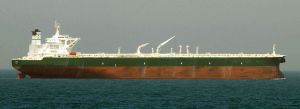England's Historic Seascapes: Southwold to Clacton
Oxford Archaeology (South), 2007. https://doi.org/10.5284/1000277. How to cite using this DOI
Data copyright © Historic England unless otherwise stated
This work is licensed under the ADS Terms of Use and Access.
Primary contact
Oxford Archaeology (South)
Janus House
Osney Mead
Oxford
OX2 0ES
UK
Tel: 01865 263800
Fax: 01865 793496
Resource identifiers
- ADS Collection: 746
- ALSF Project Number: 4729
- DOI:https://doi.org/10.5284/1000277
- How to cite using this DOI
England's Historic Seascapes:
Southwold to Clacton
ALSF Project Number 4729
Oxford Archaeology, 2007
North Sea Traffic Separation Zone
Primary Subcharacter Type:
Shipping lane

Main Character / current form and use
This area is predominantly characterised as a busy shipping route, within the deep water area of the Southern North Sea, c 66 km from the North Essex coast. The area is transited by ferries, bulk containers, gas carriers and tankers (Jones et al nd). The majority of the area is covered by a traffic separation scheme proposed by the International Maritime Organisation (IMO) and subsequently adopted by the international shipping community.
In addition, the southern part of the area is covered by the South Galloper military zone, named after the Galloper sandbank (see The Galloper character area). The zone is one of several within the study area used by the navy for mine laying and mine counter-measure exercises. The area is permanently delineated though access is only restricted during active exercises, notification of which is given by radio shortly before minelaying takes place.
The area is predominantly within the depth range of 30-50 m, though there are pockets where depth decreases to 20-30 m. The overlying geology is predominantly gravelly muddy sand with a patch of gravel along the western edge of the region. The tidal range in the character area is within the range of 2-5 m at Mean Spring Tide (DTI 2004).
A number of submarine cables and a gas supply pipeline are located within the character area. These include the Concerto South network cable which connects the UK to the Netherlands and Belgium and is maintained by Interoute and Flute Ltd and Farland North cable which connects Aldeburgh to Domburg in Holland. The gas pipeline connects Bacton to Zeebruge in the Netherlands and is maintained by UK Deal.
Secondary and tertiary Royal Yacht Association (RYA) routes transit the area in an east-west direction connecting the Harwich Harbours to the continent.
Historic Character and archaeological potential
The character area has no known navigational features and as such is not a feature of historic charts. The area was defensively mined as part of a large coastal barrier during WW2 and contained the break in this barrier known as Gap E (Foynes 1994). Considering this there are surprisingly few known wrecks in view of the size of the character area. This may be a consequence of the depth of the area and lack of investigation. In total twelve wrecks are known, one of which is considered dangerous. The only named wreck within the character area is HMS Grenville, which sank after hitting a mine.
The potential therefore exists for shipwreck archaeology although it is not expected to be high. Any surviving vessels may be well preserved as a consequence of their depth. In addition, the area has potential to contain submerged prehistoric landscapes, features or artefacts, having been dry land prior to 8000 BP. However, no investigation work is known to have been done in this area.
Character perceptions
The character area is likely to be well known by the International shipping community as part of a well-used deep water shipping route, bordering on the median line with Holland. It is too far from either coast to be well-known by the land-based communities.
Bibliography
DTI, 2004, Mean Spring Tidal Range: Atlas of UK Marine Renewable Energy Resources. Department of Trade and Industry, 2004
Foynes, J. P., 1994, Battle of the East Coast (1939-1945). J. P. Foynes
Jones, L. A., Coyle, M. D., Evans, D., Gilliland, P.M., & Murray, A. R., Southern North Sea Marine Natural Area Profile: A contribution to regional planning and management of the seas around England. Peterborough: English Nature.
Wikipedia. Available at: http://en.wikipedia.org (15/03/2007)








